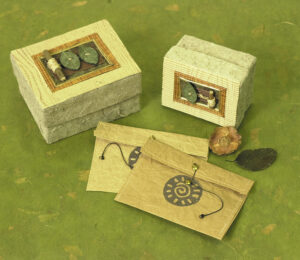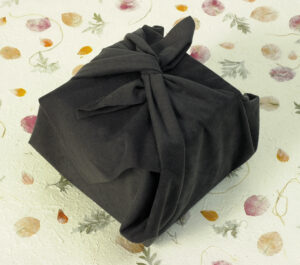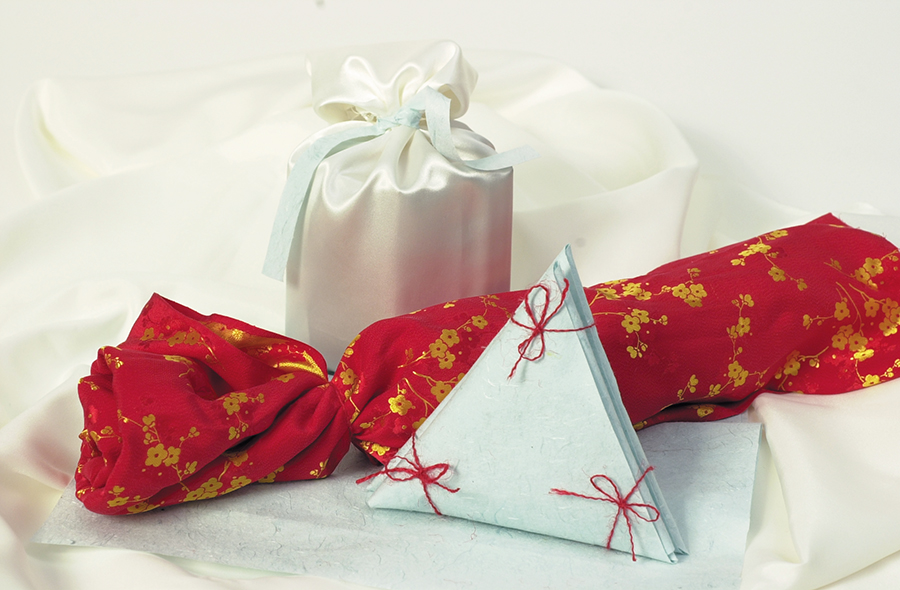Gift wrapping is unique among paper crafts in that it is never intended to be the end result; rather, the wrapped gift manifests the thoughtfulness implicit in the gift itself. Much of the pleasure of giving and receiving a gift lies in the delayed gratification created by the necessity for unwrapping.
Delight awaits—just a moment longer—beneath artful cover.
The elaborate Japanese tradition of gift-wrapping—tsutsumi—evolved from the concept that it is impolite to offer an unconcealed gift; if the gift can not be wrapped, it should be covered by or proffered upon a sheet of paper.

Exquisite in their simplicity, tsutsumi techniques include layering several sheets of thin paper, the edges of which are graduated on the top of the package to create a color contrast or subtle shading effect; wrapping only part of the gift so that the rest remains visible; and using origami-like folds and faux knots to add both real and visual texture.
Protocol is the signature of tsutsumi; every gift is wrapped according to rules specific to its classification, which runs contrary to the freedom of expression that is America’s hallmark. However, gifts wrapped with simple tsutsumi-like élan are certain to stand out from the glittering and profusely beribboned masses that traditionally exemplify the American holiday season.
Begin with the paper. Wallpaper remnants offer imaginative possibilities. Tissue paper and the brown paper used for mailing packages also are good choices, as are origami papers, parchment, and handmade decorative papers, which can be found in great variety at artist supply stores.
Handmade papers—colored with natural dyes and made from fresh cotton waste, not wood—are also eco-friendly.
Along those lines, textured papers and natural fiber papers featuring such inclusions as rose petals, leaves, and grass are available at least via the Internet; while these papers are bulkier, they could be just the thing for larger gifts.
Or create a soft furoshiki wrap out of something that either becomes another spectacular gift or a reusable piece of fabulous fabric: a silk scarf, a linen handkerchief, luminescent silk gauze, an organic cotton bag, a swatch of heirloom lace, or a linen tablecloth or runner. A simple self-knot at the top often is all that is needed to complete the wrap.

Tsutsumi uses simple twines, fibers, and cords for otherwise finishing things up, the effect of which can be easily replicated with slender ribbon, lace, brown packaging string, butcher’s twine, yarn, and raffia. Also suggested are such natural embellishments as lavender sprigs, bay leaves, pine cones, seed pods, bittersweet and other winter berries, eucalyptus, mistletoe, natural or faux leaves, and raffia-wrapped pebbles and twigs. Or use dried flowers from the garden; simply hang flowers upside down in a dark place for several weeks and give delicate ones a light spritz of hair spray before affixing to packages to keep them from shattering easily. Top any gift with a single piece of specialty candy, a fragrant cinnamon stick, or a small ornament.
The simply yet artfully wrapped gift conveys ultimate thoughtfulness, which is the best gift of all.
—By Kat Schneider, Photography by Michelle Markee
